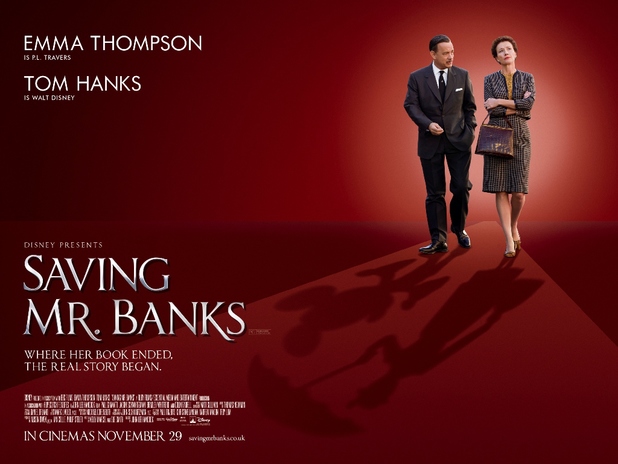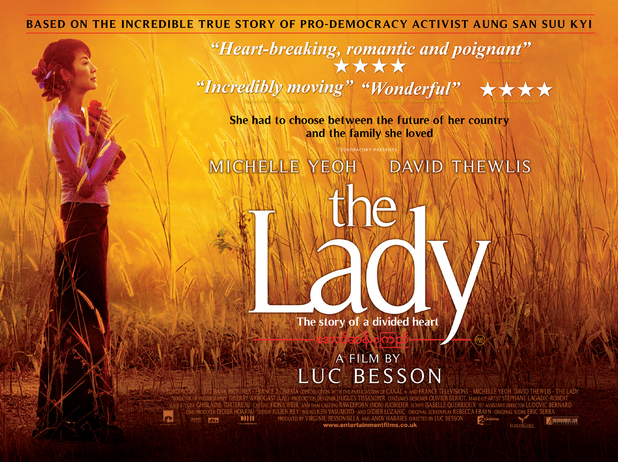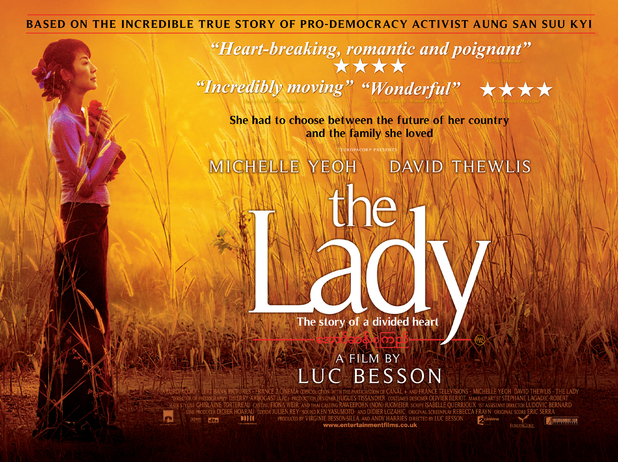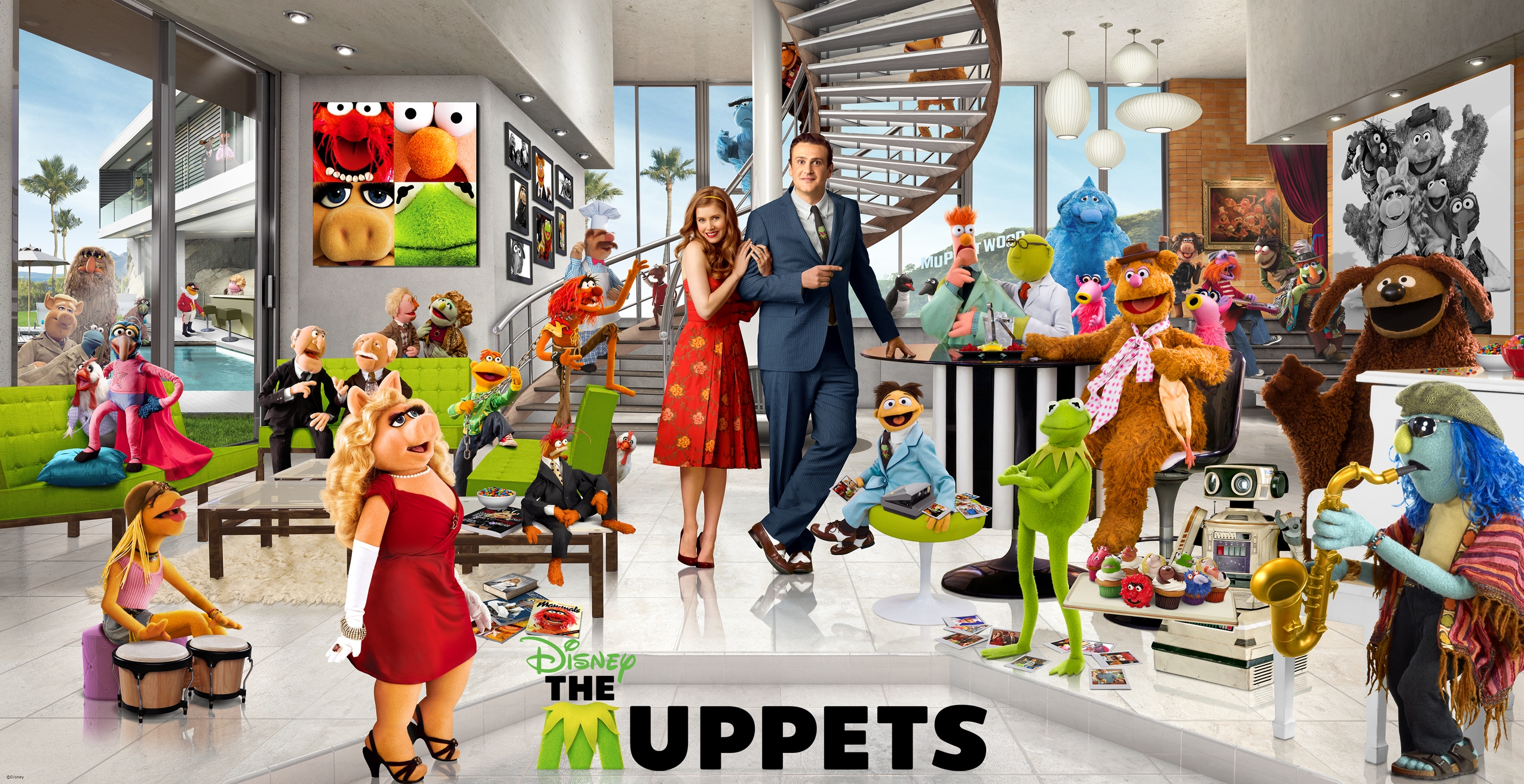This piece by Jarrah Hodge is cross-posted with permission from her blog, Gender Focus.
When I saw Disney was making a movie about Walt Disney convincing P.L. Travers to sign over the rights to Mary Poppins, I was expecting to come away at least slightly annoyed. As much as I adore Emma Thompson, who plays Travers, I thought this was going to be a story about a stubborn artist who’s convinced by the magic of Disney to stop being so uptight.
Surprisingly, it wasn’t quite that simple and I found a lot to like about the movie, Saving Mr. Banks.
First off, both Disney and Travers are portrayed as complicated and imperfect human beings, though obviously she’s got more serious issues to resolve here than he does. The film moves back and forth between her trip to Los Angeles to see Disney, having been pushed into it by financial need; and her childhood in Australia struggling with an alcoholic, big-dreaming father (Colin Farrell).
And the film pokes fun at the whole candy-coated Disney empire, mostly through Thompson as a delightfully bitter, acerbic, stiff Travers, who’s appalled at the mountains of cakes and donuts brought in for lunch and the way her hotel room is crammed full of stuffed Disney cartoon characters.
Second, the supporting actors, particularly the women, are outstanding. Ruth Wilson plays Travers’ mother in her flashbacks and every single facial expression and word out of her mouth shows her internal conflict and struggle to get by taking care of three children and worrying about her husband. Disney’s female staffers–Kathy Wilson as Tommie and Melanie Paxson as Dolly–also make a lot out of their relatively small roles.
– Spoiler alert –
Third, while I wouldn’t call it a feminist film on the whole (there’s not a single person of colour to be found, and ultimately it’s still about a woman whose life is defined by men), there are some feminist scenes. In one, Disney asks his staffer, Tommie, to help him decipher what’s really going on with Mrs. Travers.
“You’re a woman, aren’t you?” he asks. Tommie basically responds that he’s wrong to think all women have some innate inability to decipher one another, and he’s wasting his time trying to figure out Travers.
In another scene Travers gets angry at the writers for making Mrs. Banks a suffragette. The choice to portray Mrs. Banks as a suffragette has been debated by feminists. Some see the very mention of the suffrage movement as feminist, while others (including myself) see the ending, where Mrs. Banks gives up her “Votes for Women” sash for her kids’ kite tail, as a refutation of women working and campaigning outside the home.
In Saving Mr. Banks, the writers tell Travers they felt they needed Mrs. Banks to have a “job” or occupation outside the home to justify there being a nanny there. One of the songwriters outright says he feels Mrs. Banks is neglectful. But Travers snaps at them that “being a mother is a job. It’s a very hard job.” The audience knows she’s talking about her own mother as much as Mrs. Banks, and it’s a really poignant moment to see that solidarity.
Oh! And the film actually passes the Bechdel Test, since Tommie and Dolly talk about Travers’ temper, and Travers talks to Dolly about the ridiculous food she keeps bringing in.
On the down side, I found the use of flashbacks a bit over-done, like we were being spoon-fed all the connections. That said, the visuals and acting were enough to keep you hooked in.
There’s a satisfying ending but thankfully it’s not overly simplified or magical. Travers might be satisfied with the new ending that redeems the character of Mr. Banks (and thus her father), but she’s still never going to approve of everything about the movie, especially not the silly, cartoon dancing penguins.
Overall, if you’re looking for a film to see over the holidays, you could do a lot worse than Saving Mr. Banks.
[youtube_sc url=”http://www.youtube.com/watch?v=Ec8pPQDIOfg”]

















